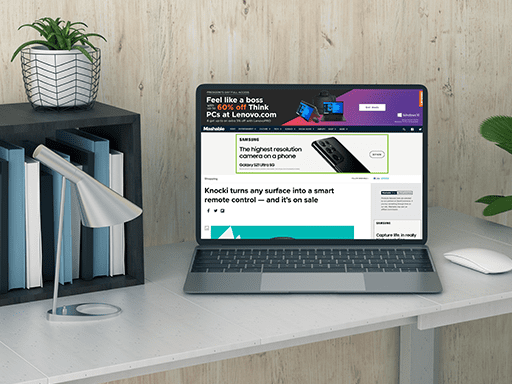Looking for a way to improve your search or e-commerce program? Display campaigns have the potential to add value to an e-commerce or search program if implemented correctly. These ads can bring your product to potential customers without them having to search for the product themselves. Display ads also can ensure new customers don’t drop off the sales funnel as well as bring back returning customers. So how can you incorporate display ads into your e-commerce strategy?
In this blog, we’ll walk you through how to set up display ads to compliment your e-commerce or search program. Then, you’ll learn how to track results and improve performance. Let’s get started.

Setting Up A Display Campaign for Optimal Results with E-commerce

1. Define Your Audience
When setting up display campaigns, you first need to define your audience. It’s best to choose a specific audience group that has the highest likelihood of converting. For this reason, we suggest making remarketing audiences using people who have already visited the website. This ensures that you only serve ads to people who have demonstrated interest in your products in the past.

2. Personalize Your Display Ads for E-commerce Shoppers
It is also important to serve personalized ads to your audience to further increase the likelihood they will convert on these ads. For this reason, we suggest you use the dynamic ads features, which use product data from your shopping feed to serve ads featuring products in which the customer has already demonstrated interest.
Setting Up A Display Campaign for Optimal Results with E-commerce

3. Choose High-Quality Images and Ad Copy
When creating the display ad, you will have to choose images and logos to be displayed alongside it. If choosing to use dynamic ads, the images will not be shown frequently, but it is still important to use a high-quality image that best demonstrates your product line. When inputting ad copy, include as many headlines and descriptions as possible as this will allow Google to cycle through them and find the best ad copy that connects with the customer.

Tracking Your Results and Improving Performance

We almost exclusively look at last click data when tracking performance for display ads at Omnitail. Typically, an assisted click on a display ad is not indicative that it was a big factor in causing a purchase. Since display ads generally gather a lot of impressions, they also generate a lot of clicks, and many of those clicks eventually convert. Display, though, is a passive touch point, and since people aren’t seeking out this touch point, it is not as indicative of an eventual conversion as other touchpoints (like text ads.)
For example, let’s say assisted + last-click revenue attributed to display is 2.5x higher than last-click revenue attributed to display over the last six months. This would indicate display campaigns are highly effective, and we should drastically increase spend, but it is also likely many of these conversions would have happened even without the assisted click from display.
Instead, the last click data demonstrates that a display ad was the last paid media a customer looked at before making a purchase. This makes it a more reliable view of how much revenue comes directly from your display ads.
Once you have your ads running there are a number of strategies you can use to optimize performance. You can…
1. Adjust the bids on your audiences
2. Change out poor performing ad copy and images
3. Create an ad schedule to increase bids on more profitable times of the day
4. Use placements exclusions to cease serving ads on underperforming websites.
With this, we find that display ads typically take time to ramp up before seeing expected results. This can be a number of weeks depending on the account

Results We’ve Seen
Through utilizing these strategies for display campaigns, we have seen impressive additions to search programs. For one client, adding display boosted Google CPC revenue by 10% in the first six months after we introduced it into their program.
Ready to see similar results for your business? Try integrating display ads into your program—or if you don’t have time. Reach out to see how Omnitail can help you out!








